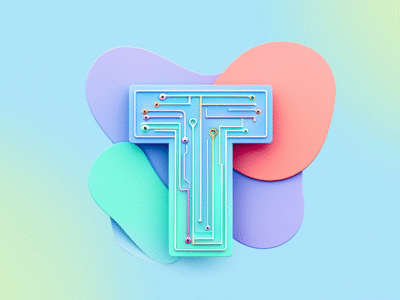UX Writing: Words That Sell
UX Writing: Words That Sell is an essential course for professionals who want to master the art of interface copy and transform digital products into powerful sales and conversion tools. Whether you are a marketer, product manager, designer, startup founder, …
Overview
UX Writing: Words That Sell is an essential course for professionals who want to master the art of interface copy and transform digital products into powerful sales and conversion tools. Whether you are a marketer, product manager, designer, startup founder, or technical writer, this course equips you with actionable skills to create concise, effective, and persuasive interface texts. You will learn how to leverage the latest research in psychology and behavioral economics, apply best practices in UX writing, and utilize generative AI to scale content production and improve conversion rates across channels.
Who This Course Is For
- Marketers seeking to boost conversion rates and engagement through microcopy and landing page optimization.
- Product Managers who want to validate product messages, run A/B tests, and measure the impact of copy on key metrics.
- Designers aiming to integrate text and visual elements seamlessly for a unified user experience.
- Startup Founders focused on building effective onboarding, communicating value propositions clearly, and scaling growth.
- Technical Writers interested in evolving their skills to include persuasive and user-centric writing in digital interfaces.
Key Benefits
- Discover the critical role of microcopy in shaping user behavior and product perception.
- Learn to research audiences, map their needs, and select the right tone of voice for each channel and context.
- Craft clear, concise, and persuasive texts for landing pages, push notifications, microcopies, and automated emails.
- Apply psychological triggers, such as social proof, urgency, and loss aversion, ethically and effectively.
- Structure content for specific channels and tasks, adapting text length and style for mobile, web, and email.
- Write and refine advanced prompts for generative AI models to produce tailored copy at scale.
- Conduct A/B tests, interpret results, and iterate quickly to optimize business outcomes.
- Collaborate seamlessly with designers and developers using unified documentation systems like Figma and Notion.
- Ensure your messaging supports brand identity and complies with ethical standards.
What You Will Learn
- Fundamental principles of UX writing, including clarity, usefulness, and empathy.
- How to analyze the user journey and identify all touchpoints for effective copy placement.
- Techniques to reduce word count and enhance scannability for faster comprehension.
- Methods for audience research, persona development, and constructing a brand voice chart.
- Psychology of perception, cognitive biases, and motivational triggers that drive action.
- Modern text structuring models (AIDA, ACCA), headline and CTA crafting, and empty state messaging.
- Harnessing LLMs (such as GPT) for prompt engineering, data injection, and safeguarding brand consistency.
- Practical frameworks for landing page audits, microcopy systems, push notification flows, and email automation.
- Data-driven approaches: A/B testing, heat mapping, and measuring text impact on KPIs.
- Strategies for sustainable collaboration between writers, designers, and technical teams.
Curriculum
- 9 Sections
- 56 Lessons
- Lifetime
- 1. UX Writing Basics8
- 1.1DZAP 1.1 The role of microcopy in user experience
- 1.2DZAP 1.2 Principles of clarity, usefulness and empathy
- 1.3DZAP 1.3 User journey and points of contact between text and user
- 1.4DZAP 1.4 “One job per screen” method
- 1.5DZAP 1.5 Grammatical constructions that speed up reading
- 1.6DZAP 1.6 Reducing unnecessary words: the “critical list” technique
- 1.7DZAP 1.7 Design system and text: a single source of truth
- 1.8DZAP 1. Quiz3 Questions
- 2. Psychology of Perception and Motivational Triggers8
- 2.1DZAP 2.1 Theory of F-pattern and Z-pattern of reading
- 2.2DZAP 2.2 Cognitive biases that influence purchase decisions
- 2.3DZAP 2.3 The principle of “loss aversion” in the interface
- 2.4DZAP 2.4 Social proof and trust markers
- 2.5DZAP 2.5 Scarcity & urgency: when and how appropriate
- 2.6DZAP 2.6 Numbers, facts, specifics: strengthening the argument
- 2.7DZAP 2.7 Ethical boundaries of using triggers
- 2.8DZAP 2. Quiz3 Questions
- 3. Audience Research and Tone Voices8
- 3.1DZAP 3.1 Personas and JTBD through interviews and analytical data
- 3.2DZAP 3.2 User pain and benefit map
- 3.3DZAP 3.3 Matrix “Audience × Context × Device”
- 3.4DZAP 3.4 Formation of brand voice chart: ingredients and examples
- 3.5DZAP 3.5 Guide to adapting tone for different channels
- 3.6DZAP 3.6 Methodology of the “5-level readability test”
- 3.7DZAP 3.7 Analysis of competitors and identification of niche vocabulary
- 3.8DZAP 3. Quiz3 Questions
- 4. Text Structure for Channel and Task8
- 4.1DZAP 4.1 AIDA model and its modern alternative ACCA
- 4.2DZAP 4.2 Headline formulas that are opened and read
- 4.3DZAP 4.3 Short text vs. long: where and why
- 4.4DZAP 4.4 Visual hierarchy: scannability, subheadings, bullets
- 4.5DZAP 4.5 Seven rules of CTA buttons
- 4.6DZAP 4.6 Subtle empty states, 404 and system messages
- 4.7DZAP 4.7 Styles for mobile and wearables
- 4.8DZAP 4. Quiz3 Questions
- 5. Generative AI and Advanced Prompts8
- 5.1DZAP 5.1 How LLM works: tokens, temperature, top-p
- 5.2DZAP 5.2 Prompt typology: instruction, few-shot, chain-of-thought
- 5.3DZAP 5.3 Creating personalized landing pages by segment
- 5.4DZAP 5.4 Prompt for “brand voice”: example with variables tone, audience, format
- 5.5DZAP 5.5 Synthesis of long text and automatic summarization
- 5.6DZAP 5.6 Injection of facts and data through the RAG approach
- 5.7DZAP 5.7 Protective strategies: control of hallucinations and deviations from the brand
- 5.8DZAP 5. Quiz3 Questions
- 6. Landing Page Practice8
- 6.1DZAP 6.1 Analysis of the current landing: heat maps and scroll-depth
- 6.2DZAP 6.2 Checklist for the introductory screen and first scroll
- 6.3DZAP 6.3 Repackaging the USP into a “benefit ladder”
- 6.4DZAP 6.4 Trust section: reviews, numbers, guarantees
- 6.5DZAP 6.5 AI generation of hero and subtitle options
- 6.6DZAP 6.6 A/B test: setup, target metric, minimum sample size
- 6.7DZAP 6.7 Documentation of changes in Figma and Notion
- 6.8DZAP 6. Quiz3 Questions
- 7. Practice of Push Notifications and Microcopies8
- 7.1DZAP 7.1 Systematization of push scenarios: lifecycle, trigger, transactional
- 7.2DZAP 7.2 Length restrictions and time localization
- 7.3DZAP 7.3 The power of the first word: verb or number?
- 7.4DZAP 7.4 GPT template for generating 10 push text variants for a segment
- 7.5DZAP 7.5 Notifications without irritation: frequency limit and content burnout
- 7.6DZAP 7.6 Microcopy in forms: placeholders, errors, helpers
- 7.7DZAP 7.7 “Cone of context” method for system messages
- 7.8DZAP 7. Quiz3 Questions
- 8. Practice of Automatic Letters and Chains8
- 8.1DZAP 8.1 Architecture of welcome-flow and drip-campaigns
- 8.2DZAP 8.2 Subjects of letters that are opened: 5 formulas for the heading
- 8.3DZAP 8.3 Personalization of text and dynamic content
- 8.4DZAP 8.4 LLM-generation of the letter body taking into account the segment and lifecycle phase
- 8.5DZAP 8.5 “One story, one CTA” technique
- 8.6DZAP 8.6 Metrics: open rate, CTR, revenue per mail
- 8.7DZAP 8.7 Domain reputation support and anti-spam filters
- 8.8DZAP 8. Quiz3 Questions
- DZAP FinalQuiz1










